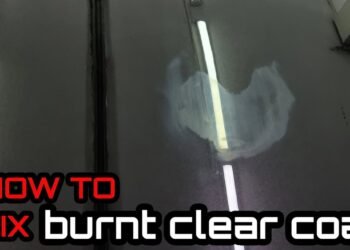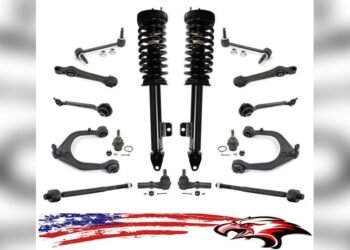Are you wondering if acetone can harm your car’s paint? It’s a common question, especially when you need to remove stubborn stains or paint drips quickly.
You might have even heard people using nail polish remover or acetone to clean their car’s surface. But before you grab that bottle, it’s important to know what acetone really does to your car’s paint. Can it strip away the shine you worked so hard to maintain?
Could it cause lasting damage? You’ll discover the truth about acetone and car paint—what risks you face, safer alternatives you can use, and how to protect your vehicle’s finish. Keep reading to make sure your car stays looking its best without accidental damage.

Credit: www.reddit.com
Acetone And Car Paint
Acetone is a common solvent found in many household products. It has a strong ability to dissolve substances. This makes it useful but also risky for car paint. Understanding how acetone reacts with car paint can help prevent damage. Car paint has several layers, each with a specific role. Acetone can affect these layers differently. Knowing the chemical nature of acetone helps explain its impact on paint.
Chemical Properties Of Acetone
Acetone is a clear, volatile liquid. It evaporates quickly at room temperature. It is highly flammable and has a strong smell. Chemically, acetone belongs to the ketone family. It dissolves oils, fats, and many plastics easily. This makes it a powerful cleaner and degreaser. However, its strength can harm delicate surfaces like car paint. Acetone can break down polymers in paint layers. This can lead to dullness or damage if not handled carefully.
How Acetone Interacts With Paint Layers
Car paint has multiple layers: primer, color coat, and clear coat. The clear coat protects the paint and gives it shine. Acetone can dissolve this clear coat quickly. Once the clear coat is damaged, the color layer becomes exposed. This exposure can cause fading and peeling. Acetone can also remove wax or sealants on the surface. This reduces the car’s protection against dirt and UV rays. On plastic parts, acetone can cause hazing or warping. The reaction depends on how long acetone stays on the surface. Quick contact may cause minor damage, but longer exposure is harmful.

Credit: www.youtube.com
Risks Of Using Acetone On Cars
Acetone is a strong chemical often used to remove paint and glue. Using it on cars can be risky. It can harm the car’s surface and parts. Understanding these risks helps protect your vehicle’s look and value.
Acetone can break down layers that protect the paint. It may cause changes in color and texture. Some car parts made of plastic can also be damaged by acetone. Below are the main risks to consider.
Damage To Clear Coat And Wax
The clear coat is a thin, transparent layer over the paint. It protects the color and shine. Acetone can dissolve this clear coat quickly. Wax, which adds shine and protection, can also be stripped away. Losing these layers leaves paint exposed and vulnerable to damage from sun and water.
Discoloration And Peeling Effects
Acetone can remove the protective layers unevenly. This causes the paint to fade or change color. Sometimes, the paint may start to peel or crack. These effects make the car look old and worn. Fixing this damage requires costly repairs and repainting.
Impact On Plastic Components
Many cars have plastic parts like bumpers and trim. Acetone can harm these plastics by making them cloudy or soft. This damage is often permanent and hard to repair. Using acetone on plastic parts can ruin their look and function.
Real-life Examples And Demonstrations
Real-life examples and demonstrations show how acetone interacts with car paint. Watching these helps understand the risks and effects more clearly. Many car enthusiasts share their experiences online. These examples reveal the real damage acetone can cause. They also highlight common mistakes made during DIY car care.
Video Evidence From Car Enthusiasts
Car enthusiasts often post videos testing acetone on different car surfaces. These videos show how quickly acetone breaks down clear coats and paint layers. Some demonstrate severe discoloration and peeling after a few seconds of exposure. Others show plastic parts turning hazy or warped. These visual proofs warn viewers about using acetone on cars. They emphasize the need for caution and proper products.
Common Diy Mistakes
Many DIYers use acetone thinking it is safe for quick paint fixes. They leave acetone on the surface too long, causing damage. Some apply it without testing on a hidden spot first. Others mix acetone with other chemicals, increasing harm. These mistakes lead to costly repairs and repainting. Learning from these errors helps protect your car’s finish. Always choose safer, car-specific cleaning products.
Safer Cleaning Alternatives
Cleaning your car’s paint requires careful choices. Harsh chemicals like acetone can cause damage. Safer cleaning alternatives exist that protect your car’s finish while removing dirt and stains. These options offer gentle yet effective results.
Choosing the right cleaner helps maintain the paint’s shine and strength. Your car will look better longer with less risk of harm.
Rubbing Alcohol Benefits
Rubbing alcohol is a milder solvent than acetone. It can remove light stains and oils without stripping the paint’s protective layers. Use it with a soft cloth and test on a small area first. It evaporates quickly, reducing the chance of damage. This makes it a good option for spot cleaning.
Clay Bars And Rubbing Compounds
Clay bars safely remove contaminants stuck on the paint surface. They do not harm the clear coat when used properly. Rubbing compounds help smooth out minor scratches and oxidation. Both tools restore smoothness and shine. Follow product instructions carefully for best results.
Specialized Automotive Cleaners
Cleaners made specifically for cars are the safest choice. They target dirt and grime without affecting paint or plastic parts. These products often include protective ingredients that maintain the finish. Using specialized cleaners supports long-term care of your vehicle’s paint.
Tips For Using Nail Polish Remover Safely
Using nail polish remover on car paint carries risks due to its acetone content. Taking precautions reduces damage chances. Follow these simple tips to use nail polish remover safely on your vehicle.
Proper care can help protect your car’s paint from harm while cleaning small spots.
Spot Testing Before Use
Test nail polish remover on a small hidden area first. Apply a tiny amount and wait a few minutes. Check for color changes or damage. Spot testing helps avoid surprises on visible surfaces.
Short Application Time
Do not let nail polish remover sit on the paint. Apply it briefly, just enough to work on the spot. Immediately wipe it off with a clean cloth. Quick removal limits how much the acetone can harm the paint.
Polishing After Treatment
After cleaning, polish the area to restore shine and protection. Use a gentle car polish or wax. Polishing helps rebuild the clear coat and smooths the surface. This step reduces the chance of lasting damage.

Credit: www.reddit.com
Expert Opinions And Community Insights
Experts and car enthusiasts share valuable views about acetone’s effect on car paint. Their knowledge helps us understand the risks and safe practices. Both professionals and everyday users offer insights based on real experience.
This section highlights expert advice and community stories to guide safe handling of acetone on vehicles.
Advice From Car Detailing Professionals
Detailers warn that acetone is a strong solvent. It can quickly strip the clear coat and paint layers. Most professionals recommend avoiding acetone on painted surfaces entirely.
They suggest using products made specifically for automotive paint care. These products clean without causing damage. Some detailers say acetone may be used for very small spots but only with extreme caution.
Quick application and immediate removal are crucial. Leaving acetone on paint too long causes discoloration and peeling. Experts also highlight the risk acetone poses to plastic trims and bumpers.
User Experiences From Forums And Social Media
Many car owners share stories about acetone use online. Some report damage after accidental spills or careless use. Their paint showed dull spots, fading, or peeling after contact with acetone.
Others mention using acetone for tough stains but stress the importance of quick wiping. Several users recommend patch testing on hidden areas before applying acetone widely.
Community members often advise trying gentler alternatives first. They mention rubbing alcohol or clay bars as safer options. These insights reflect caution learned through trial and error.
Frequently Asked Questions
Will Nail Polish Remover Take Car Paint Off?
Nail polish remover contains acetone, which can strip car paint and clear coat. It may cause discoloration, peeling, or damage if left too long. Use automotive-safe products instead to protect your car’s finish. Always test on a small area and wipe off quickly if necessary.
What Solvent Is Safe To Use On Car Paint?
Isopropyl alcohol and specialized automotive paint cleaners are safe solvents for car paint. Avoid acetone or nail polish remover to prevent damage.
Will 100% Acetone Remove Paint?
Yes, 100% acetone can remove paint by dissolving it quickly. Use with caution, as it may damage surfaces underneath.
Can Acetone Remove Car Paint Completely?
Yes, acetone can dissolve and remove car paint by breaking down the clear coat and paint layers.
Is Acetone Safe For Car Paint Cleaning?
No, acetone is too strong and can cause paint discoloration and damage the protective layer.
Conclusion
Acetone can harm your car’s paint by removing protective layers. This damage may cause discoloration, peeling, or cracking. Plastic parts are especially vulnerable to acetone’s effects. Safer options include rubbing alcohol or specialized car cleaners. Always test on a small hidden spot before using any solvent.
Use acetone sparingly and wipe it off quickly if needed. Follow up with polish to protect the paint. Choosing the right products keeps your car’s finish safe and looking good.

















